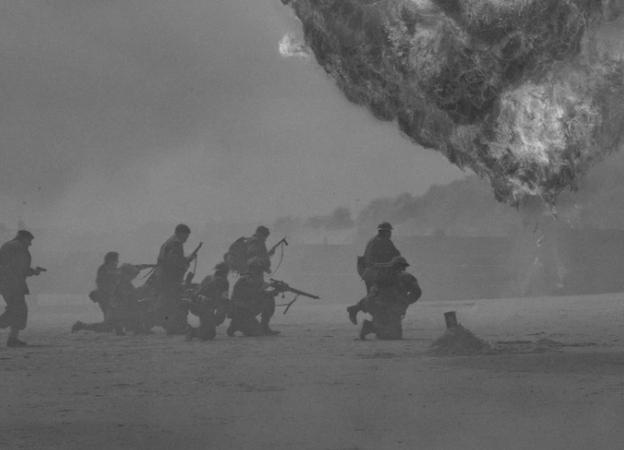What D-Day and Your Career Have in Common

Table of contents
- D-Day had a rocky start with huge hurdles to overcome
- What does D-Day have to do with your career?
- Is it time for Plan B?
- 4 steps to create Plan B
- In Conclusion
D-Day had a rocky start with huge hurdles to overcome
“Despite the best-laid plans... anyone who has been in war knows that things are really going to go wrong, and boy did they go wrong on D-Day,” said General Jack Keane, U.S. Army (Ret.), during an interview about the Normandy invasion.
On June 6th, 2019, the U.S. and its Allies paused to commemorate and pay tribute to the 75th anniversary of D-Day. From the beginning, General Keane noted that the landing at Normandy faced monumental hurdles—obstacles that could have derailed the largest invasion force in history and doomed it to failure.According to General Keane, here are five major reasons D-Day should have failed:
- Bad weather: This slowed the boarding of troops from ships to landing crafts, resulting in the invasion unfolding in daylight. More visibility made the troops more vulnerable to enemy fire.
- Premature unloading of troops: The landing crafts dropped troops too far from shore, forcing them to disembark in heavy surf.
- Enemy fortifications remained intact: U.S. naval and air bombardments failed to neutralize all the enemy’s fortified bunkers.
- Missed bombing targets: The plan was to drop bombs along the beach to create protective foxholes for incoming troops, but the bombs were dropped in the wrong area.
- Paratroopers missed the jump area: Not a single paratrooper unit landed on the correct drop zones due to having to exit planes prematurely because of relentless anti-aircraft fire.
Despite the troubled start, why did the D-Day invasion ultimately succeed?
According to General Keane, “troops… improvised, innovated, adapted. It was their courage for sure, but it was also their incredible flexibility to deal with the unexpected. Their performance on that day rescued an operation that could have been doomed on those beaches.” When Plan A failed, they swiftly developed and executed a Plan B.

What does D-Day have to do with your career?
As you read this, it’s probably safe to say you’re not currently crawling across a beach while enemy bullets rain down, trying to figure out your next move. But there is a common thread between D-Day and navigating professional terrain. In both scenarios, there are plans in place, as well as the possibility that those plans won’t play out exactly as imagined. On both the Normandy beaches and in your career, if plans do fall through, there’s always a choice: Give up or go on. Admit defeat, or improvise and adapt.
And let’s face it—things rarely go exactly as planned.
Perhaps your plan was to retire from the company you worked at for years, but they decided to downsize or merge your division five years earlier than your planned retirement. Or perhaps your plan was to have more leisure time, but you’ve now realized one can only play so much golf and go on so many relaxing cruises. Like those troops on the beach, you have to scrap the plan that isn’t working and come up with another strategy.
Here are some statistics about the gig economy:
-
$864B: Amount generated by the U.S. gig economy in 2018 (SIA - Staffing Industry Analysts)
$2.7T: The projected size of the worldwide gig economy by 2025 (Wharton School of Business)
$330B: U.S. Serviceable Addressable Market (SAM) for independent workers earning over $100K/year in 2018 (MBO Partners)
60%: Percentage of workers who want to continue working after retirement, but not full-time (*US Department of Labor)

Is it time for Plan B?
As the statistics show, the gig economy is expanding, and the days of spending a lifetime at a single company are becoming less common. With transitions now the norm, redefining and achieving job security may require a shift from the traditional plan. The old “Plan A” of full-time employment might not provide the best opportunities for job security and personal satisfaction. Instead, “Plan B,” involving fractional engagement with multiple companies, is emerging as the new Plan A.
The gig economy is here to stay—it’s not a passing trend. Executives who adapt to this shift by redeploying their skills as fractional executives will be the early beneficiaries. Fractional executives are finding the advantages of a portfolio career, enjoying the freedom to choose when, where, how, and with which companies they engage. This flexibility may be the key to redefining success both personally and professionally.
4 steps to create Plan B
If your Plan A isn’t working, follow these four steps to develop a Plan B:
- Identify your goal(s): After the setback, assess whether your goals remain the same or if you need to revise them. Determine your next steps and where you want to go from here.
- Assess your current position: Are you transitioning into retirement, adjusting to a layoff, or building a career as a fractional executive? Evaluate your current situation, including how the evolving gig economy affects your goals and professional landscape.
- Create a new strategy: Based on your assessment and acceptance of the new normal, develop a new plan of action. Many executives at various career stages create a Plan B that includes working as a fractional CxO.
- Commit to the new plan: A great plan will not succeed unless you fully commit to it. Just as the troops on D-Day regrouped and executed a new strategy despite thwarted plans, your dedication to the new plan is crucial. Their commitment was key to the success of the invasion and the liberation of France.
In Conclusion
Plan B is rapidly becoming the new Plan A. In a fast-paced industry, having a Plan B prepared and ready to execute is crucial. Improvise, innovate, and adapt your company's approach to achieve success.
Ready to form your winning team and hire a veteran fractional leader? Search the GigX Network (it’s free!). Find fractional CxOs who want to leverage their professional experiences and skills to help your company get more wins.
Ready to join a business that needs your specific skill set and lead a team to victory as a fractional leader? Join GigX and create a Network profile.
Already a GigX member? Thanks for suiting up and engaging in the gig economy. We’d love to hear your story about how you're redefining success as an independent leader. Please email us your story.






